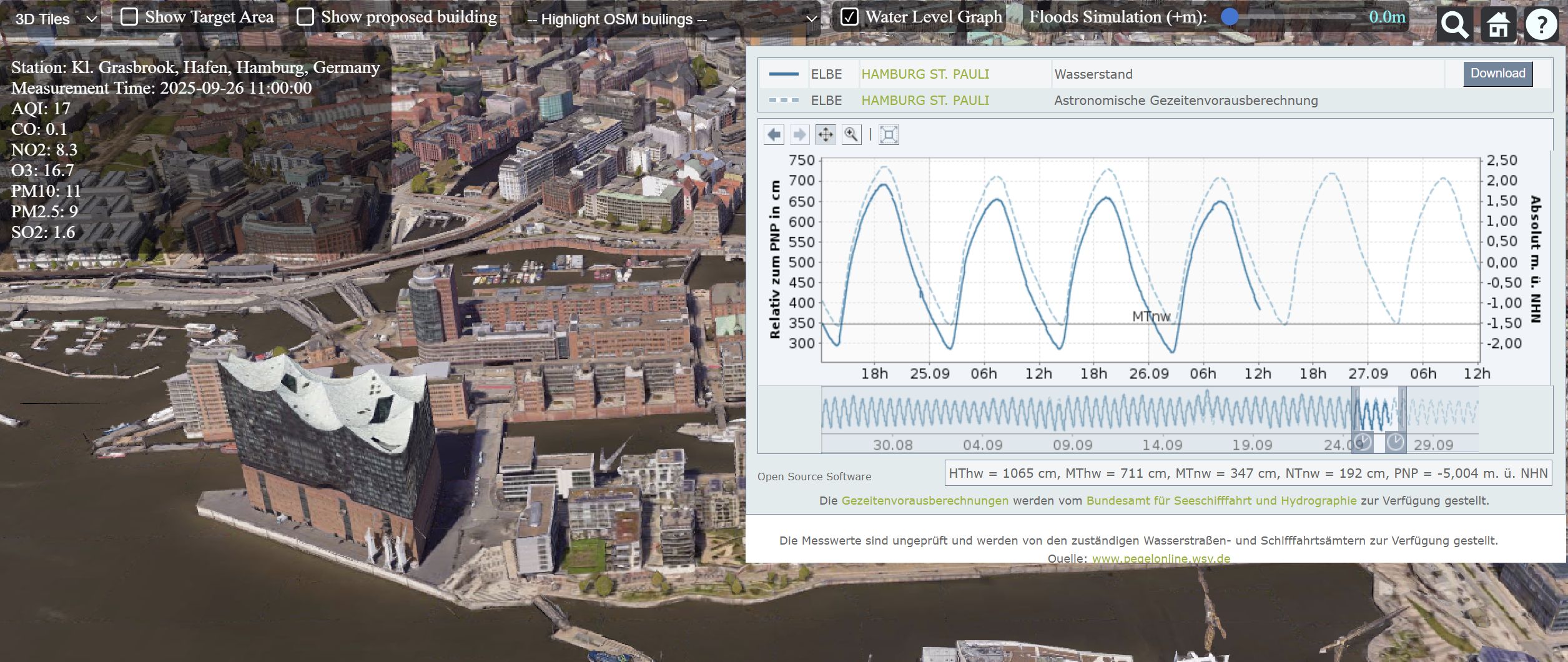Geospatial Digital Twins
Abschnittsübersicht
-

In this OER module, you will learn about the concept of geospatial digital twins and explore some fields of application. You will create a simple digital twin application using publicly available datasets from the City of Hamburg.
In the practical exercise, you will use:
- CesiumJS, an open-source JavaScript library for 3D geospatial visualization.
- CesiumION, a platform for streaming, storing, and tiling 3D data.
- Real-time water level data from PegelOnline
- Real-time air quality data from AQICN.org
- Docker to set up and run our application
This tutorial is structured as follows:
- Overview
- Background
- The idea of Digital Twins
- Components of a Digital Twin
- What is so special about Digital Twins
- Application Areas of Digital Twins
- Case study - Hamburg City's Digital Twin Initiatives
- Practical Exercises
- Setting Up the Digital Twins application
- Exploring the Digital Twins application
- Air quality at different locations
- Flood Simulation
- Visualize a Proposed Building
- Summary and Discussion
Target Audience and Prerequisites
This tutorial is designed for students and professionals who want to improve their understanding of Spatial Information Infrastructures, and in particular, learning more about the concept of Digital Twins. This tutorial requires some basic knowledge of geodata and geographic information systems. Knowledge on Docker would be helpful, but is not absolutely necessary as this tutorial will guide you through the various steps of working with Docker.
You will need about 90 minutes to work through this tutorial.
How to use the OER module
Simply download the PDF file, read and follow the tutorial.
Authors
This OER module has been developed at the Institute for Geoinformatics (IFGI), University of Münster, in collaboration with 52°North GmbH. Authors are James Ondieki, Simon Jirka and Albert Remke.
License Statement
You are free to use, alter and share the content of the tutorial under the terms of the CC-BY-SA 4.0 license, unless explicitly stated otherwise for specific parts of the content. All logos used are generally excluded.
Any code provided with the tutorial can be used under the terms of the MIT license. Please see the full license terms: https://github.com/oer4sdi/OER-DIGITAL-TWINS/blob/master/LICENSE.md.
The tutorial can be referenced as follows: “OER-DIGITAL-TWINS”, OER4SDI project / University Münster, CC BY-SA 4.0.
